Managing budgets at the project level is essential to controlling costs and ensuring profitability. In Odoo 18, budgets are handled using Analytic Accounts and linked directly to projects. This allows you to track revenues, expenses, and compare actual spending against planned amounts in real time.
In this guide, we’ll walk through how to set up and monitor a project budget in Odoo 18, step by step.
Enable Analytic Accounting and Budgets:

The first step is to enable the required features.
- Navigate to Accounting > Configuration > Settings.
- Activate:
- Save your settings.
This will unlock the budget and analytic tools inside Odoo.
Create an Analytic Account for the Project:

First, create your project. Then go to the Analytic tab inside the project form.
Here, add the analytic account you created — for example, Project Laptop — in the Project field.
Create the Budget for the Project:
Now that the project has an analytic account, the next step is to create budgets for both revenue and expense. These budgets will help you track the financial performance of the project
- Navigate to Accounting > Accounting > Analytic Budgets.
- Click New to create a budget.
Revenue Budget
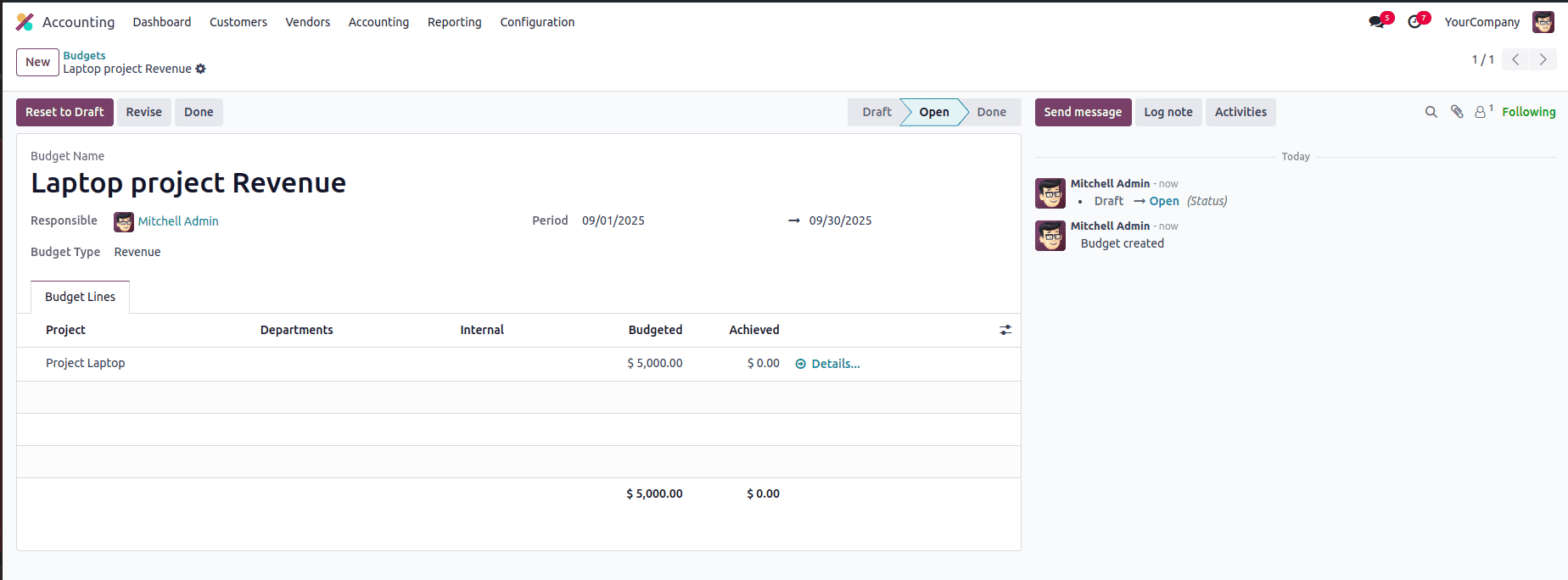
- Budget Name > Example: Laptop Project Revenue
- Responsible > Select the budget owner
- Budget Type > Revenue
- Period > Enter the budget period (e.g., 09/01/2025 – 09/30/2025)
- Under Budget Lines, choose the analytic account Project Laptop and enter the planned revenue (e.g., $5,000).
Expense Budget
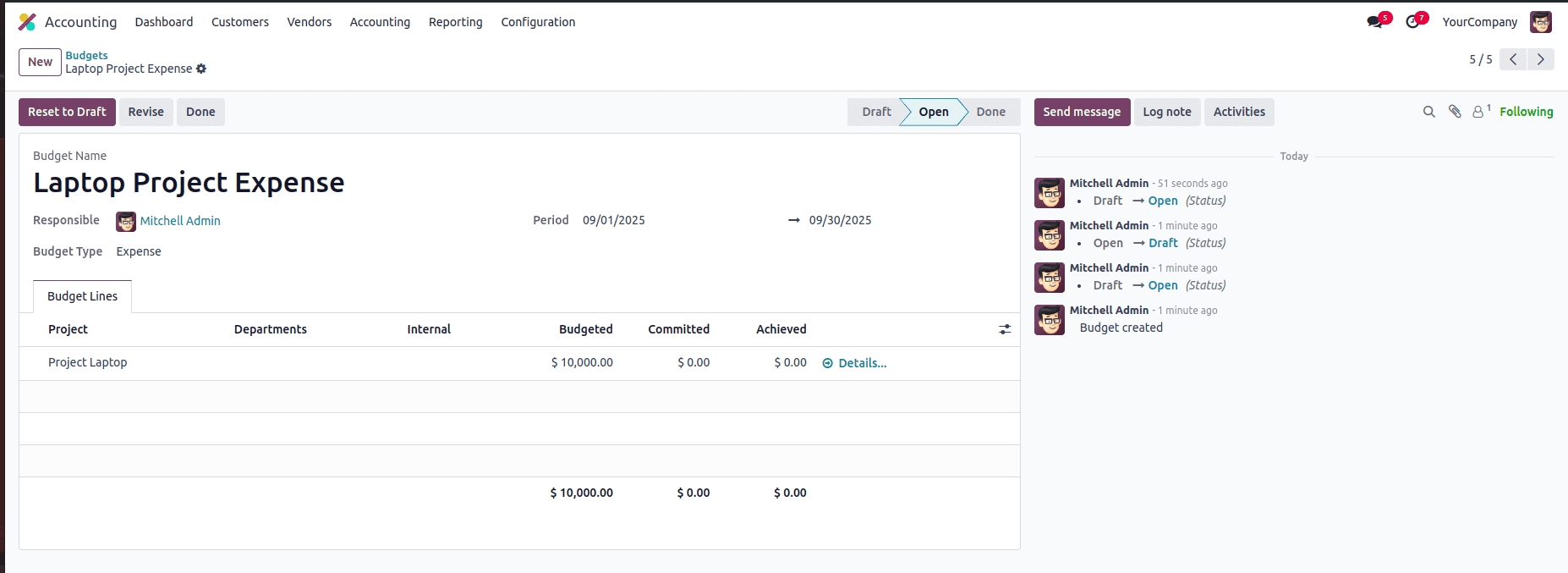
- Budget Name > Example: Laptop Project Expense
- Responsible > Select the budget owner
- Budget Type > Expense
- Period > Use the same or a different period as needed
- Under Budget Lines, select the analytic account Project Laptop and enter the planned expenses (e.g., $10,000).
Once both budgets are created and moved to Open, Odoo will track actual revenues and expenses against these planned amounts
Review the Analytic Account:

Once the budget is saved, go back to the Analytic Account view for Project Laptop.
Here you’ll see the budget lines attached, showing revenue and expense planning
Check the Project Dashboard:
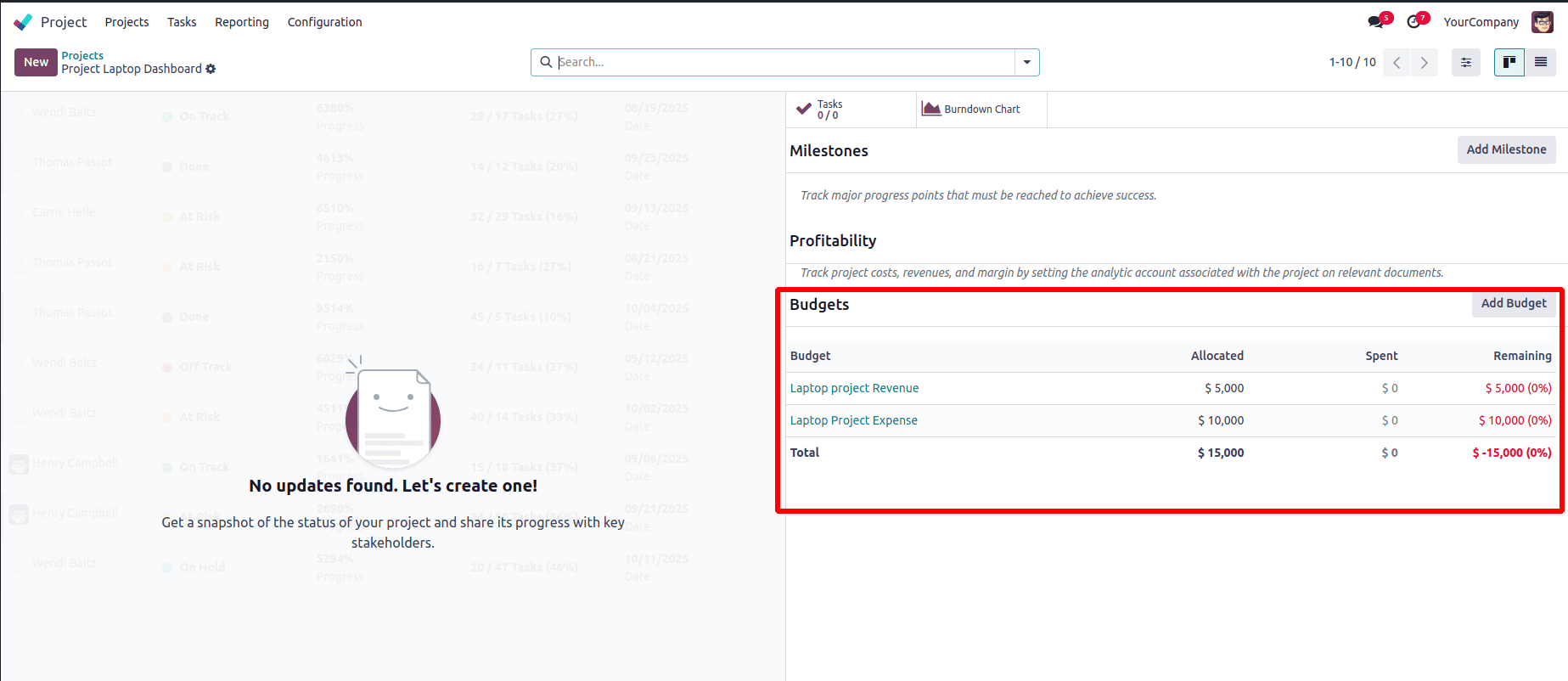
When you open the Project Dashboard, you’ll now see the Budget View section reflecting the amounts from your budget setup.
Create an Invoice and a Bill:
Once the budget is created, the next step is to record actual transactions — both revenue (invoice) and expense (bill)
Customer Invoice (Revenue)
- Go to Accounting > Customers > Invoices > New.
- Add the product or service related to the project.
- In the Analytic field, select the analytic account Project Laptop.
- Save and Post the invoice.
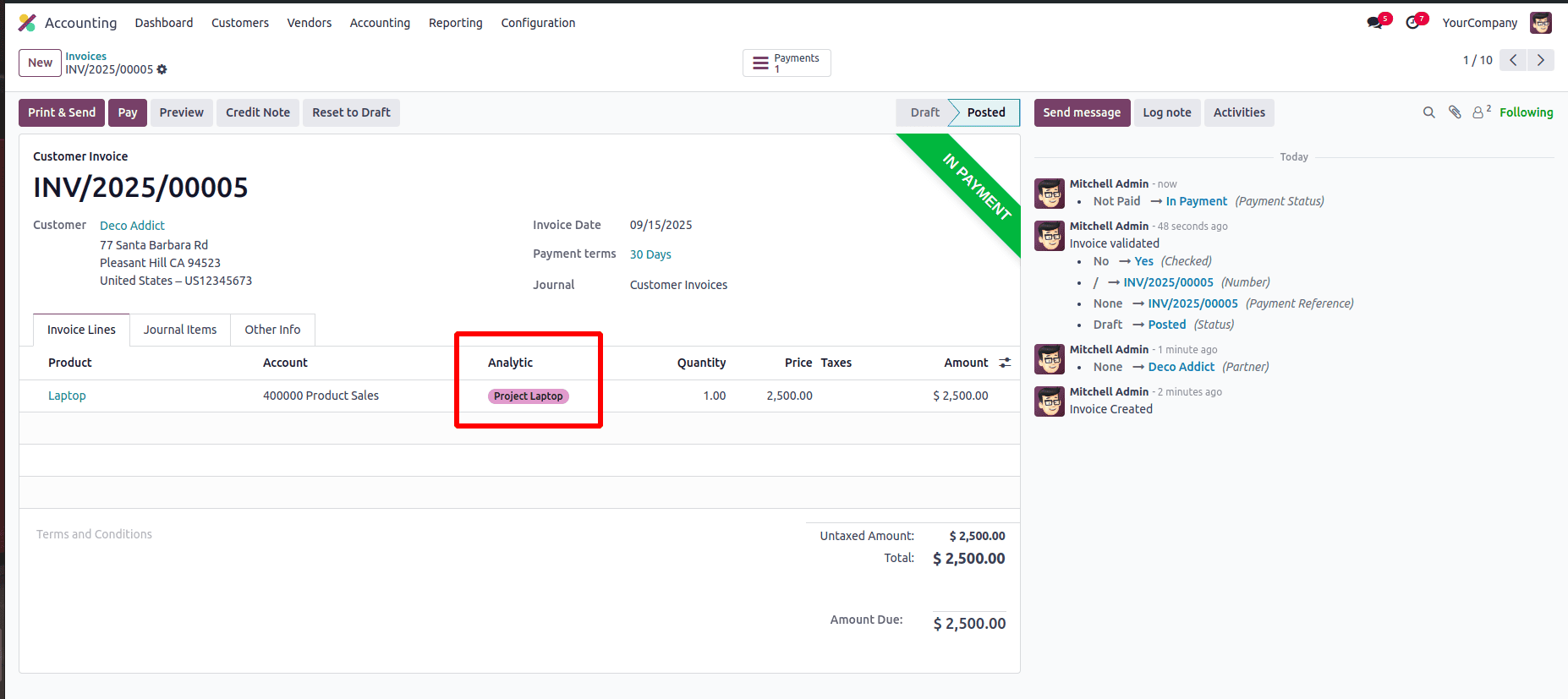
This revenue will now be tracked against the Laptop Project Revenue budget.
Vendor Bill (Expense)
- Go to Accounting > Vendors > Bills > New.
- Add the expense item (e.g., Laptop purchase).
- In the Analytic field, select the analytic account Project Laptop.
- Save and Post the bill.
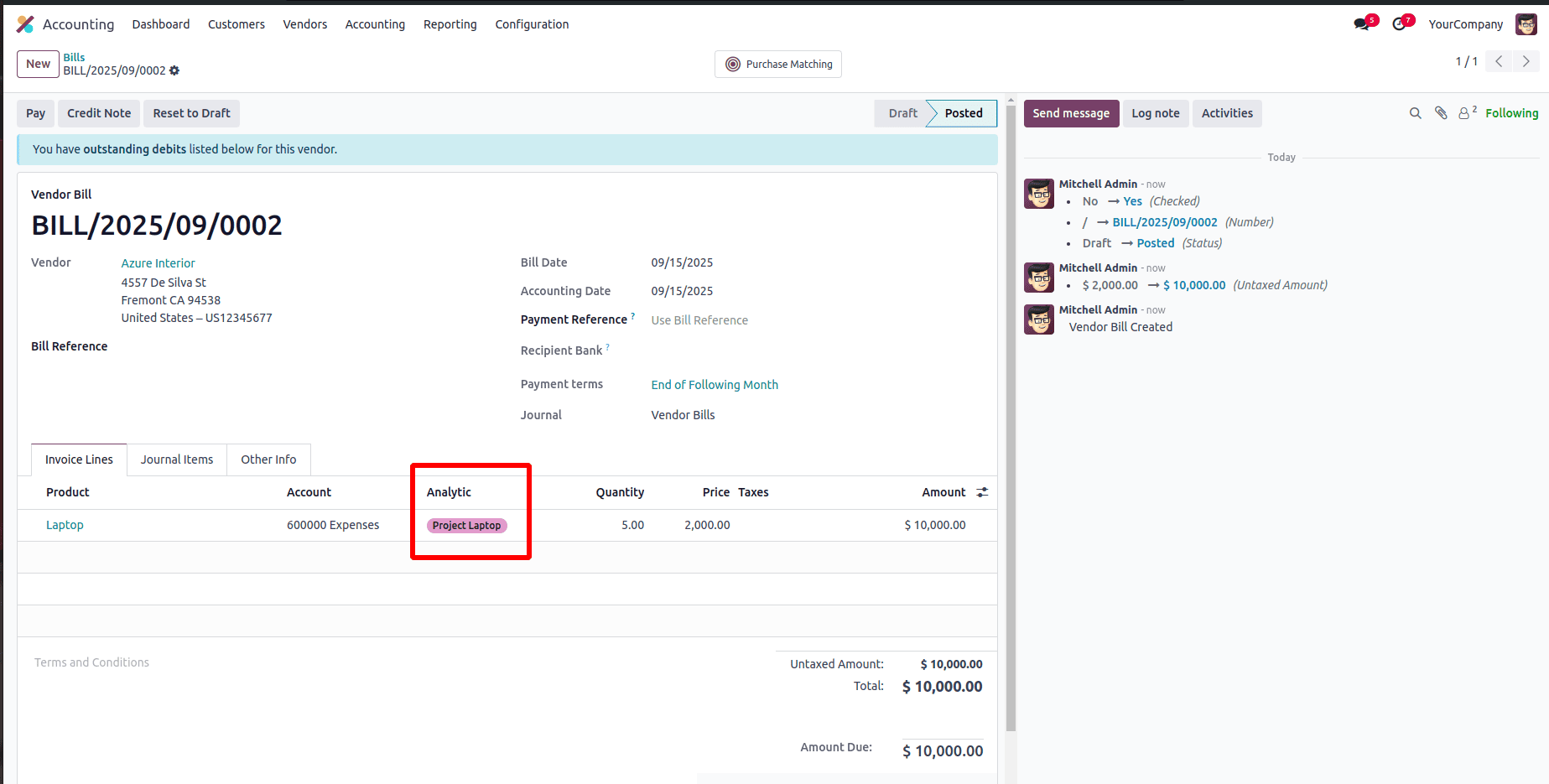
This expense will be tracked against the Laptop Project Expense budget.
Check the Project Dashboard:
After posting the invoice (revenue) and bill (expense), go back to the Project Dashboard.
Here, under the Budgets section, you can clearly see:
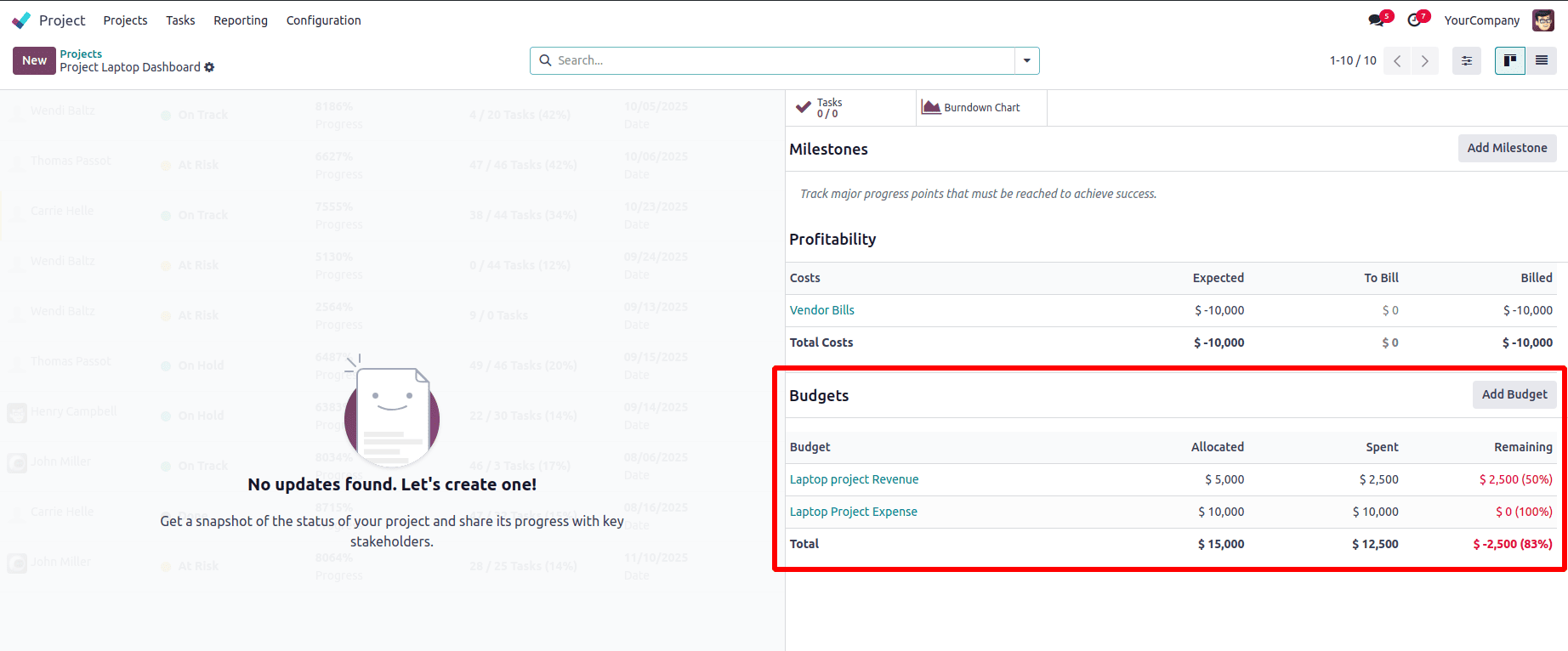
- Allocated > The planned budgeted amounts for both revenue and expense.
- Spent > The actual amounts recorded through invoices and bills.
- Remaining > The difference between planned and actual, shown with percentages.
For example, in this case:
- Laptop Project Revenue: $5,000 planned, $2,500 invoiced > $2,500 still remaining.
- Laptop Project Expense: $10,000 planned, $10,000 spent > fully consumed.
The dashboard gives you a real-time snapshot of the project’s financial health, showing whether it is on track or overspending.
Conclusion
In Odoo 18, adding a budget to a project is done by linking the project with an analytic account and creating a budget for it in the Accounting app. Once that’s set up, every invoice and vendor bill connected to the project is automatically tracked.
On the Project Dashboard, you can then see how much was planned, how much is already spent, and how much is left. This makes it easy to control costs and keep the project within budget.
To read more about How to Manage Your Company Budget Using Odoo 18 Accounting, refer to our blog How to Manage Your Company Budget Using Odoo 18 Accounting.